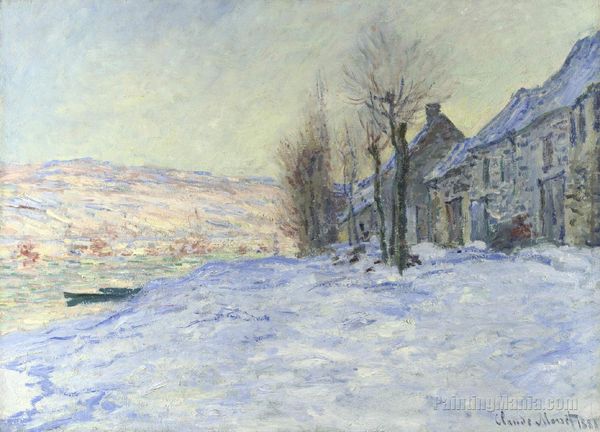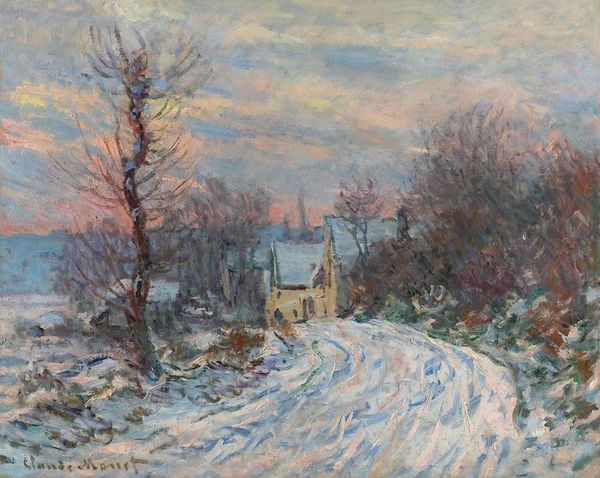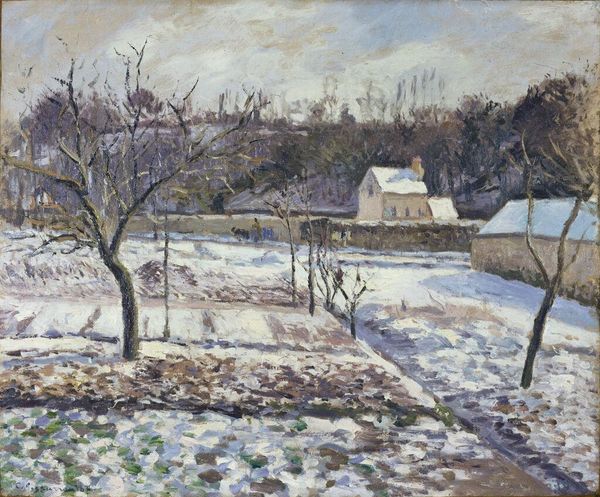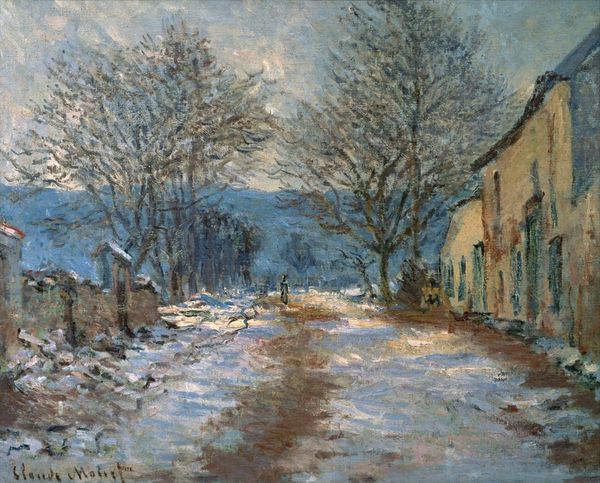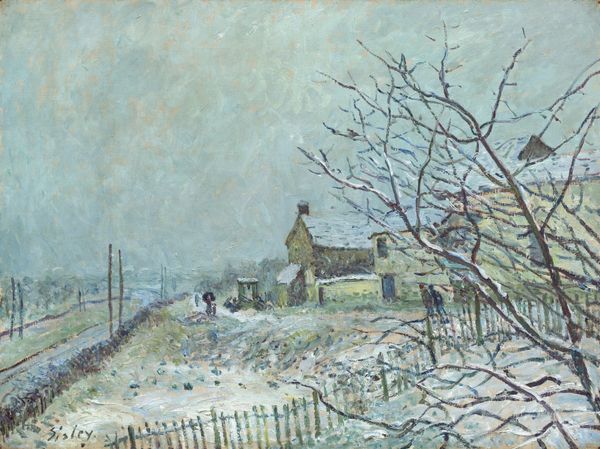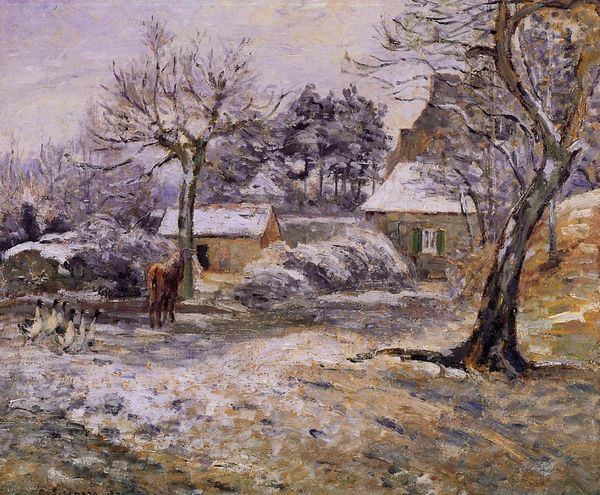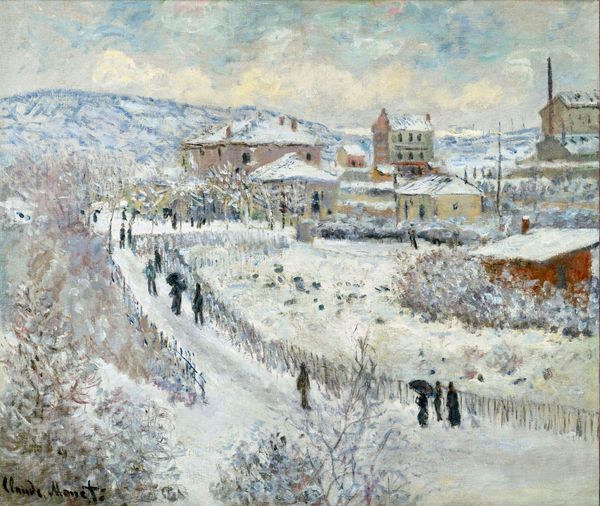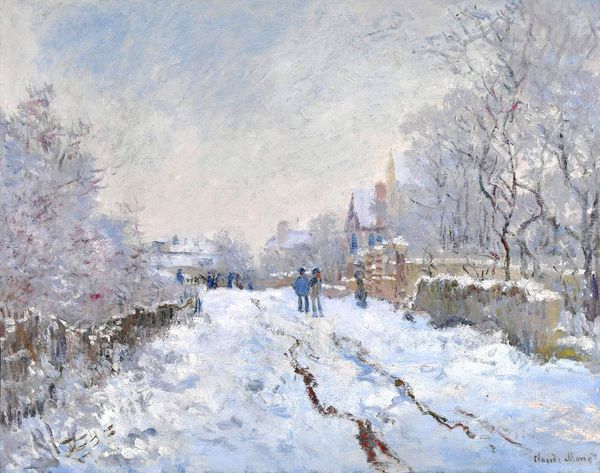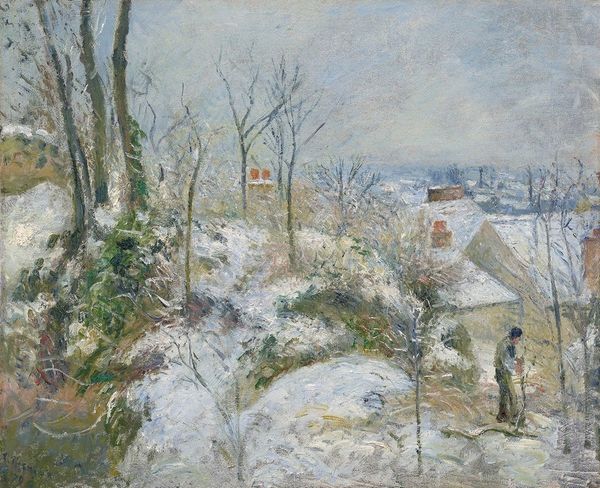
painting, plein-air, oil-paint
#
painting
#
impressionism
#
plein-air
#
oil-paint
#
landscape
#
house
#
impressionist landscape
#
oil painting
#
seascape
#
cityscape
#
building
Copyright: Public domain
Curator: Snow Rifts Near the Seine, painted by Gustave Loiseau, is an impressionist oil painting depicting a snowy landscape by a river. The buildings almost seem to melt into the snow-covered ground. What do you find most compelling about it? Editor: The textures created by the visible brushstrokes, especially the way they depict the snow and stone, are fascinating! It makes me think about the physical act of applying paint to the canvas. Does the application method or technique have any significance, considering that the painting was completed en plein air? Curator: Absolutely. Loiseau's emphasis on plein-air painting, directly from nature, foregrounds the artist's labor and interaction with the environment. It highlights the means of production, connecting the artwork directly to the artist's experience and the materials they employed in confronting that environment. Do you see a tension between "high art" and "craft" here? Editor: Yes, I do. There is something quite accessible about a landscape painting done en plein air that breaks the divide between labor, nature, and the resulting work. The focus on materials elevates "Snow Rifts Near the Seine" beyond pure aesthetics. It's about Loiseau's engagement with the Seine in winter. How did the rise of industrialization shape artistic expression at this time? Curator: Mass production changed the economics of painting; with premixed paints, and even painting equipment being broadly commercialized, it became much more accessible and changed the perception and valuation of an individual’s artistic expression. Editor: So, by making the process so visible, the artist resists that commodification of art, showing the physical toil required for painting on location. I guess it reclaims the value of the individual artistic labor. Curator: Precisely. We also need to think of Impressionism in terms of social commentary. Editor: That connection between materiality, production, and societal context definitely gave me a new appreciation for Loiseau's work. Curator: Indeed, seeing art as a product of material circumstances expands our understanding of its cultural value.
Comments
No comments
Be the first to comment and join the conversation on the ultimate creative platform.
